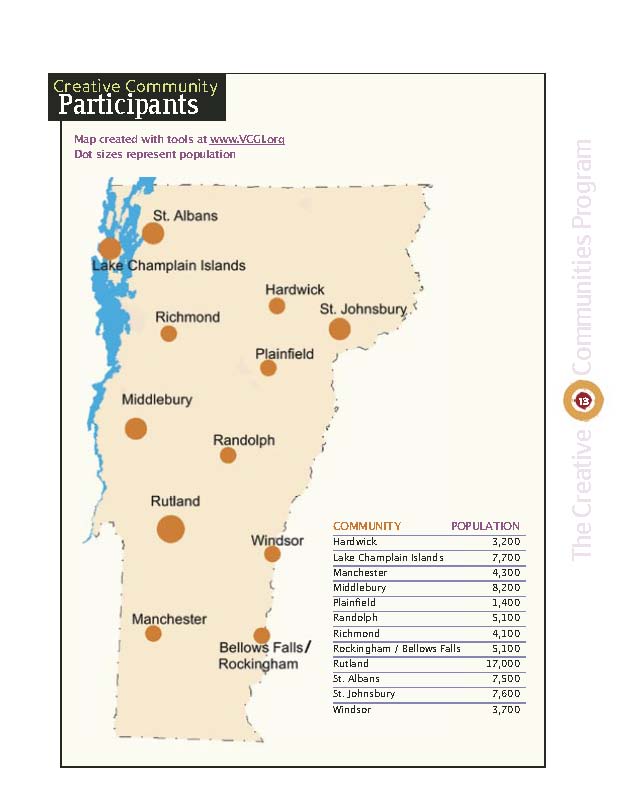A healthy Vermont economy has traditionally relied on a strong sense of heritage, individuals’ ingenuity, businesses that always retain their entrepreneurial spirit, and the distinct character of our rural communities.
In 2006-2007, with major support from Jane’s Trust, VCRD piloted the Creative Communities Program (CCP) to offer an opportunity for towns, villages, and cities around Vermont to use a public participation process to explore ways of combining local culture, community, and commerce for a strong economic future.
Twelve communities participated including: Grand Isle County, Hardwick, Manchester, Middlebury, Plainfield, Randolph, Richmond, Rockingham/ Bellows Falls, Rutland, St. Albans City, St. Johnsbury, and Windsor.
The program was modeled on the revitalization of Vermont towns like Brandon, Bellows Falls and Vergennes where local leaders built partnerships between artists, cultural organizations, town government, and key businesses to build activities, redevelop properties, and establish reputations as towns that encourage innovative business development. Today, these towns are building their creative workforces, attracting businesses, and developing jobs. Tax revenues are up. They have a public image – a brand – as a town on the move with rising energy and spirit.
The CCP emphasized three main components of the creative economy:
- The Importance of Place: “Place”, includes the natural, physical and social environments. Securing a vibrant sense of place is key to sustainable economic vitality. The creative economy thrives in places where people want to work, live, and participate as active citizens.
- Creative Partnerships: The creative economy brings voices to economic development discussions that have not traditionally been thought of as business partners; including arts, heritage, place-based, and other (usually) not-for-profit organizations. They offer essential perspectives in economic development discussions.
- Creative Assets: The creative economy relies on innovative individuals to generate new ideas that give local businesses a competitive edge and build a larger culture of ingenuity. Leveraging cultural assets generates income for a region, while forming a community environment that inspires creative thinking in everyone and encourages people to explore diverse skills.
Priority Projects
As part of this process, each community came up with a list of priority projects they wanted to pursue as a way to advance their creative economies.

